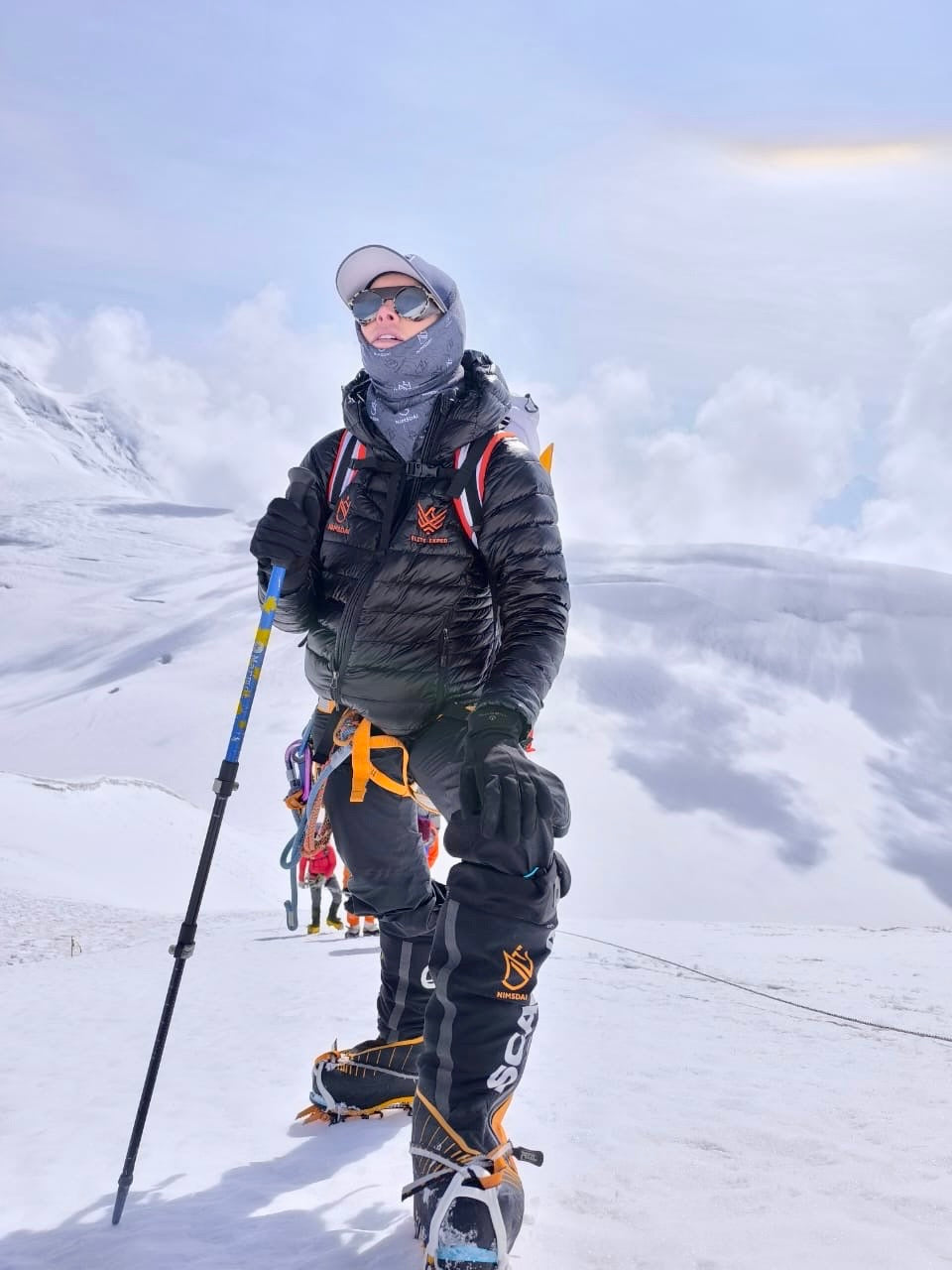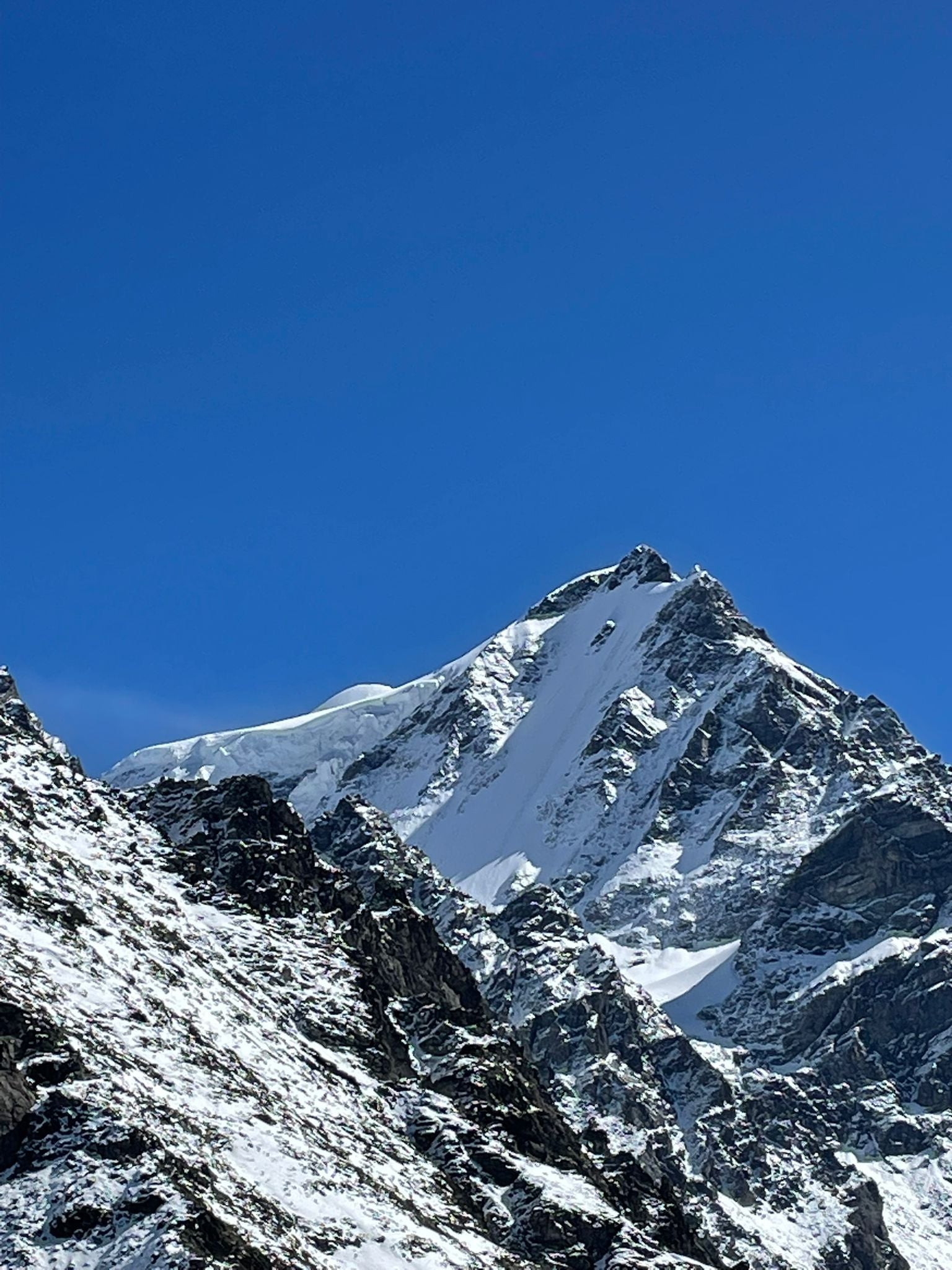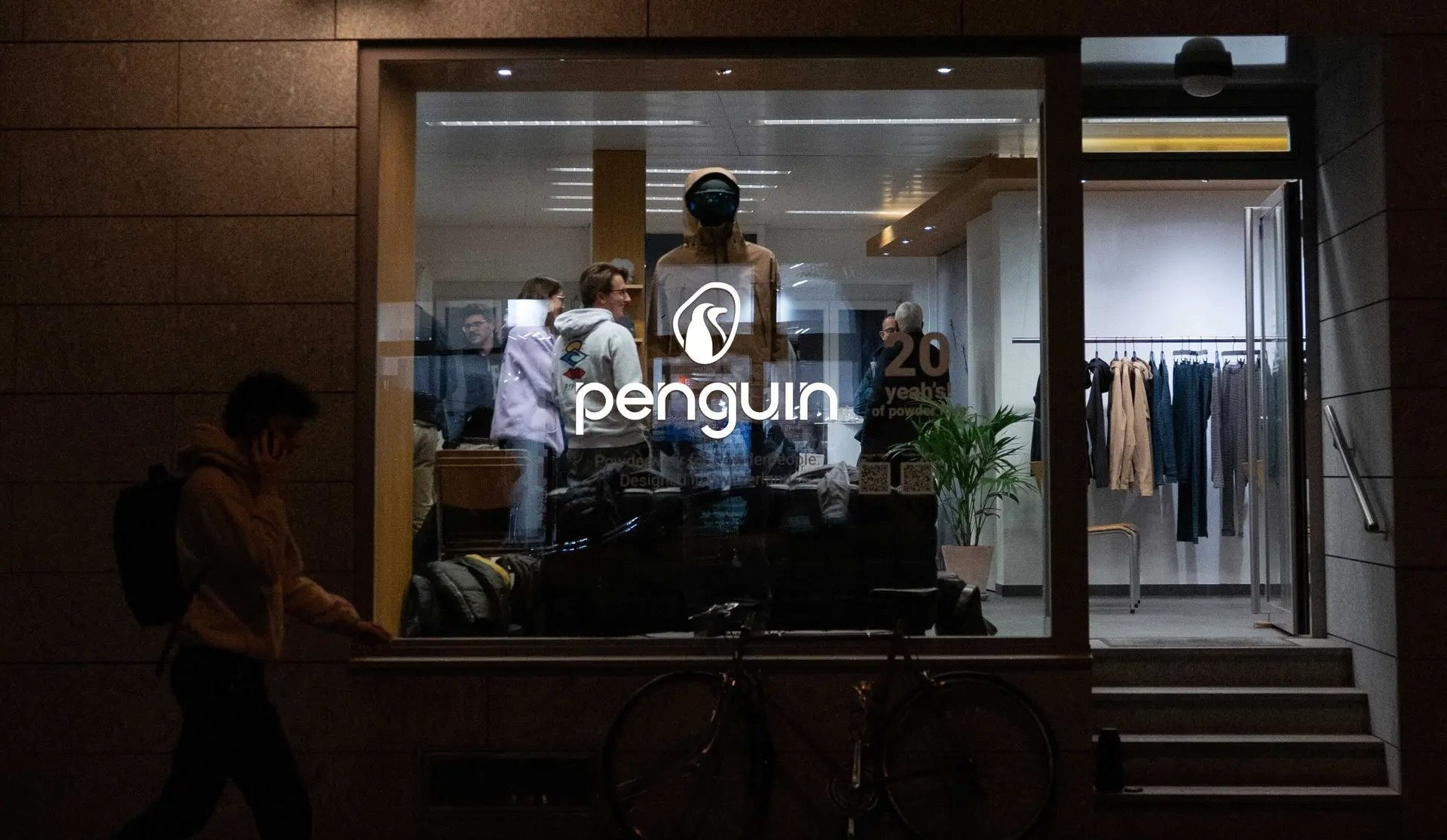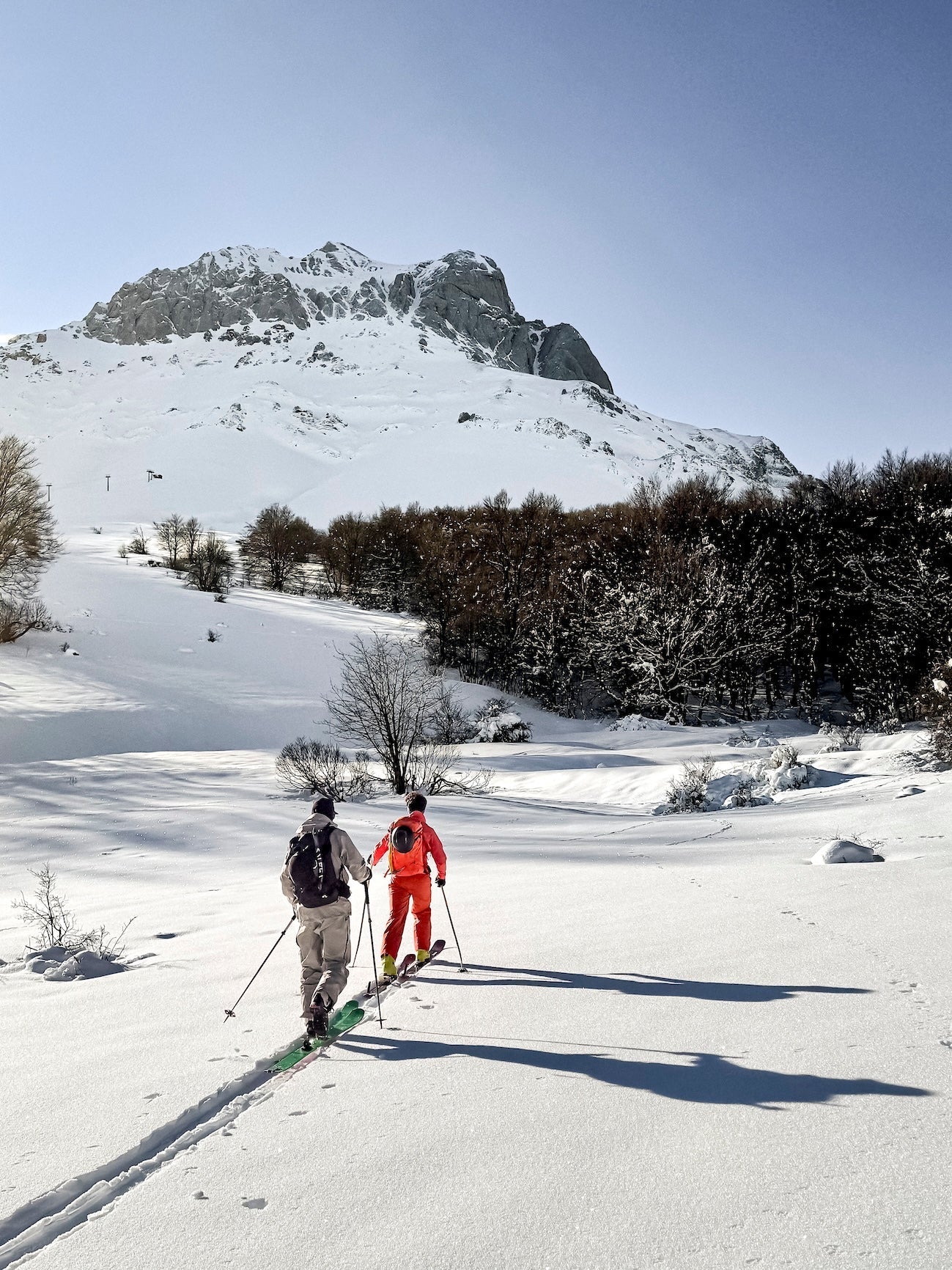Interview Christine Vogondy


Christine is now a former employee of a real estate agency, founder of a Hypoxia training center in Geneva, a passionate mountaineer, and one of our very first clients. Five years ago, she bought a pair of Moiry from us, then a second one. One day, she reached out to ask if we could give her a little support for her upcoming expedition to Pakistan.
Two months later, we received a photo of her wearing our Moiry Tortoise… at the summit of K2!
That piqued our curiosity, so we wanted to meet her. She welcomed us during her lunch break. When we arrived, she had just hung up the phone:
"Can you believe it? My employee won’t be allowed to work above 3,500 meters in my new Hypoxia training center—unless I give him a diving suit! At the Queen Margaret Hut in our Alps, the wardens work at 4,500 meters all summer long, but in Geneva, no, you can’t work above 3,500 meters without a diving suit!"
Another call came in, this time apparently about the construction work for her center. She hung up with a sigh:
"Good grief, setting up my center is way harder than climbing a summit! Honestly, it’s easier to climb an 8,000-meter peak without oxygen than to launch my hypoxia training project."

So, let’s get straight to the point—you recently climbed K2. How was it?
It was my dream, and it turned out to be a dream expedition. In just 26 days, I climbed five 8,000-meter peaks in Pakistan, finishing in style with K2. It was insane—we got caught in two avalanches on the way up, I froze my toes… but hey, you can’t tell, I just paint them black!
How do you balance climbing 8,000-meter peaks with a full-time job in a real estate agency?
I train before work, during my lunch break if I can, and in the evenings. I use my four weeks of contractual vacation for expeditions, and if I need more, my company offers me two additional paid weeks off, which I also use for expeditions. In exchange, they can use my image. Every single day of my vacation is dedicated to mountain projects. Usually, I come back from an expedition, and the very next day I’m at the office—with heavy legs and a sunburnt nose. My body might be exhausted, but my mind is in such a good place that in the end, it balances out.
So for you, that’s what a vacation looks like?
Actually, it’s been five years since I’ve taken a “normal” holiday. But when I show up in flip-flops in Kathmandu, for me, yes, that’s vacation—it makes me so happy. I also think it’s a form of therapy. My first expedition to Nepal was right after my divorce—that’s what I needed at the time. Today, I do it just for myself, and honestly, I’d be willing to go into debt to relive all those experiences.
What stresses you most when you set out for an 8,000-meter peak?
For me personally, not much. But for my family and friends—yes. Maybe it’s my Swiss side, but I always think about my commitments. When you go to K2, you know there’s a real chance you might die. That thought weighs on you while you’re there. For example, I got this lease for my Hypoxia center thanks to friends, and if something happened to me, it would cause them real trouble—that would bother me. And my parents live in a completely different world, so if anything happened to me, there’d be no one to take over. That would be such a shame.
And what attracts you most to this kind of experience?
First of all, I love ultra-endurance. It might sound pretentious, but climbing just one mountain isn’t enough for me. What I love is when I’m completely wiped out and I have to get back up, push forward, dig deep inside myself. Pakistan was my toughest experience, but also the best. When I came back, I was in terrible shape, but I loved it. These situations bring out the real human being in you—or at least in me. It’s also about resilience. Like in ultra-trail running, something kicks in, and I’m fascinated by what the body can endure. It might sound strange, but for me it’s a form of meditation.
Which peaks did you enjoy the most?
I absolutely loved the peaks in Pakistan. There are almost no people, no cell service, no Instagrammers. If something happens to you, no one’s coming to help—that gives you a whole different relationship to risk. Pakistan is another world. Nepal, on the other hand, is pure luxury: Everest has nothing to do with mountaineering anymore. Personally, it was an interesting experience, but I hated it. It’s a circus, beyond comprehension. Almost everyone is on Diamox, and at base camp there are tents with TVs inside. I remember this Peruvian woman at Camp 3, already on oxygen, struggling to even put on her boots, yet determined to summit. They literally dragged her up—it took 17 hours from Camp 4 and I don’t know how many oxygen bottles. She came down with so much edema her head looked like a watermelon. She went home in a wheelchair—but hey, she “did” Everest.
And the Alps?
That’s home. I feel really good there. I go on weekends, just to spend time in the mountains and train a bit. I’m saving the Alpine summits for my retirement—I’d love to maybe climb all 82 of the 4,000-meter peaks, or link several of them in some way. I’ve got lots of ideas, I just lack time and money!
How do you prepare for your expeditions?
Honestly, I love the preparation as much as the climb itself. Sometimes the summit is almost secondary. In the months leading up, you meet other mountaineers, talk with doctors, work on your body—you learn so much. Thanks to previous expeditions, I’ve gotten to know myself, mentally and physically. I can see my weaknesses: for example, I lose weight quickly, so I even earned a diploma in nutrition to try to counter that. I’ve also explored meditation and heart-coherence techniques. I love this meticulous preparation, the research—reading topo guides for hours, studying gear. Mountaineering touches on so many things that everyone can find their own angle: some like the equipment, others the technology, the spirituality, even the art. And then, the beauty of the mountains… no one’s going to say it’s ugly!
What’s the most extreme preparation you’ve done?
In 2021, I rented a hypoxic tent for my house, with a generator! I slept in it for two months before my climb. My ex-boyfriend wasn’t exactly thrilled about spending two months “camping” at 3,500 meters… in our bedroom! But soon I won’t need makeshift solutions anymore, thanks to my own hypoxia center.
Speaking of your Hypoxia center—where did the idea come from?
It started in 2024, during an expedition. We had several days of bad weather, so at base camp I wrote up my business case while waiting for a weather window. I scribbled my whole plan in my notebook. When I came home, I realized my expedition diary was basically just a half-baked business plan—not very intimate! Usually, I come back and party, but this time I went straight back into my bubble, cleaned it up, structured it properly, and pitched it, without being totally sure of myself.
And how did the banks react to your project?
Honestly, getting all the permits and dealing with the administration was a nightmare. But surprisingly, the banks backed me without asking for too many guarantees—even though they probably should have seen plenty of red flags next to my name! I guess they thought: someone who has climbed eleven 8,000-meter peaks will probably see this through. They were surprisingly supportive, which I don’t totally get: I have an extremely high mortality risk, and I’m completely alone in this new company—I don’t even have a partner! My life insurance, for example: after I came back from K2, I got a registered letter saying, “Congratulations, Christine, on your ascent, but we’re canceling your policy—your activity is too risky.” But luckily, the banks left me alone on that, otherwise I never could have opened. Right now, I’ve gone all-in. If I fail, I’ll just disappear somewhere in the Nepalese mountains! (laughs)
By the way, check out the new Keepushing Center, which Christine just opened in Geneva: keepushing.ch





Commentaires